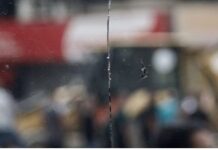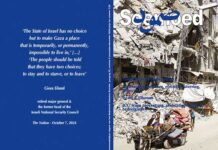Sharon Zhang
Truthout / September 5, 2024
The “buffer zone,” in which Israel has destroyed most structures, encompasses 16 percent of the land area of Gaza.
Between October and May, Israeli forces worked to create a wide “buffer zone” along Gaza’s eastern border, where they damaged or destroyed nearly everything, ranging from schools to agricultural land — making an area of destruction encompassing 16 percent of Gaza’s land, a new report finds.
According to an analysis by Amnesty International released Thursday, Israel has cleared a strip of land ranging between 1 km and 1.8 km wide. The buffer zone encompasses nearly the entirety of the Gaza side of its border with Israel, covering 58 square kilometers, or about 22 square miles.
Satellite imagery from May shows that over 90 percent of the buildings in this zone have been destroyed or severely damaged, the rights group found, while the majority of agricultural land there is also damaged.
Investigation by Amnesty International finds that Israeli forces created the buffer zone merely because of its proximity to the border fence, and for no supposed military necessity or tactical purpose. Anything in the zone appears to have been eligible for destruction: homes, schools, farms, mosques and cemeteries were all demolished.
“Around my family home we had a three dunam (0.7 acre) orchard full of fruit trees. They were all destroyed. Only an apple tree and a rose were left. I had bees and produced honey. All of it is gone now,” Salem Qudeih told Amnesty International. Qudeih lived in Khuza’a, situated near the border in Khan Younis, which Israeli forces raided and nearly totally destroyed in December and January.
“Out of the 222 houses of my relatives in the area, only about a dozen remain. My home — where I lived with my wife, my five daughters and one son — was completely destroyed,” Qudeih said.
The report notes that the creation of the buffer zone, and the indiscriminate destruction within it, should be investigated as war crimes of wanton destruction and collective punishment.
“The Israeli military’s relentless campaign of ruin in Gaza is one of wanton destruction. Our research has shown how Israeli forces have obliterated residential buildings, forced thousands of families from their homes and rendered their land uninhabitable,” said Erika Guevara-Rosas, Senior Director for Research, Advocacy, Policy and Campaigns for Amnesty International. “Our analysis reveals a pattern along the eastern perimeter of Gaza that is consistent with the systematic destruction of an entire area.”
The UN has previously warned that Israel’s “buffer zone” creation is likely in violation of international law. The destruction does not “appear consistent with the narrow ‘military operations’ exception set out in international humanitarian law,” said UN human rights chief Volker Türk in February. “Further, extensive destruction of property, not justified by military necessity and carried out unlawfully and wantonly, amounts to a grave breach of the Fourth Geneva Convention and a war crime.”
The creation of the buffer zone lends yet more evidence to the idea that Israel is seeking to deepen its colonization of Palestine with its destruction and military occupation of Gaza.
Analysis group Forensic Architecture noted recently that Israel has been creating a corridor of destruction around a new road giving Israel direct access to Gaza City, the strip’s largest city. The construction of this corridor and the Netzarim Corridor, which Israeli forces built to bisect Gaza amid the genocide, are indications that Israel intends to maintain a permanent military presence in parts of Gaza, the group said.
Israeli forces have also cleared a zone about 100 meters wide along Gaza’s border with Egypt, called the Philadelphi Corridor. Israeli officials, notably Prime Minister Benjamin Netanyahu, have made a proposal for permanent Israeli military control over the corridor a non-negotiable point in ceasefire negotiations.
Together, Israel’s corridor and buffer zone represent a cleared area around the entire land-based part of Gaza’s border, giving Israeli troops a wide space to operate as it forces Palestinians into a smaller and smaller area of the once bustling region.
Sharon Zhang is a news writer at Truthout covering politics, climate and labor












